Analysis and Design of the High Current Rising Rate Hybrid DC Current Limiting Circuit Breaker
(This article belongs to the Section Power Electronics)
Abstract
:1. Introduction
2. Principle of the HDCCLCB Based on the Electromagnetic Repulsive Vacuum Switch
3. Analysis and Design of the Commutation Process and Commutation Parameters
3.1. Equivalent Circuit of the Commutation Process
3.2. Design of the Commutation Circuit Parameters
4. Analysis and Design of the High-Speed Electromagnetic Repulsion Vacuum Contact
4.1. Geometric Model and Working Principle of the High-Speed Electromagnetic Repulsion Vacuum Contact
4.2. Mathematical Model of the High-Speed Electromagnetic Repulsion Vacuum Contact
4.3. The von Mises Yield Criterion
4.4. Optimization Design of the High-Speed ERM
5. Prototype Experiment
6. Discussion
7. Conclusions
Author Contributions
Funding
Institutional Review Board Statement
Informed Consent Statement
Data Availability Statement
Conflicts of Interest
References
- Zohrabi, N.; Shi, J.; Abdelwahed, S. An overview of design specifications and requirements for the MVDC shipboard power system. Int. J. Electr. Power Energy Syst. 2019, 104, 680–693. [Google Scholar] [CrossRef]
- Satpathi, K.; Ukil, A.; Pou, J. Short-circuit fault management in DC electric ship propulsion system: Protection requirements, review of existing technologies and future research trends. IEEE Trans. Transp. Electrif. 2018, 4, 272–291. [Google Scholar] [CrossRef]
- Fu, L.; Liu, L.; Wang, G.; Ma, F.; Ye, Z.; Ji, F.; Liu, L. The research progress of the medium voltage DC integrated power system in China. Chin. J. Ship Res. 2016, 11, 72–79. (In Chinese) [Google Scholar]
- Desbaillet, M. DC High Speed Circuit-Breaker UR6 Instructions Manual Document Number: HSBA601103TEN; Secheron SA: Geneva, Switzerland, 2008. [Google Scholar]
- Xu, Z.; Zhang, B.; Sirisukprasert, S.; Zhou, X.; Huang, A.Q. The emitter turn-off thyristor based DC circuit breaker. In Proceedings of the Power Engineering Society Winter Meeting, New York, NY, USA, 27–31 January 2002; Volume 1, pp. 288–293. [Google Scholar]
- Agostini, F.; Vemulapati, U.; Torresin, D.; Arnold, M.; Rahimo, M.; Antoniazzi, A.; Raciti, L.; Pessina, D.; Suryanarayana, H. 1MW bidirectional DC solid state circuit breaker based on air cooled reverse blocking-IGCT. In Proceedings of the 2015 Electric Ship Technologies Symposium, Alexandria, VA, USA, 21–24 June 2015; pp. 287–292. [Google Scholar]
- Kempkes, M.; Roth, I.; Gaudreau, M. Solid-state circuit breakers for medium voltage DC power. In Proceedings of the 2011 Electric Ship Technologies Symposium, Alexandria, VA, USA, 10–13 April 2011; pp. 254–257. [Google Scholar]
- Jia, B.; Wu, J.; Xia, S.; Luo, X.; Ma, S.; Jiang, Y. Analysis and Experimental Research on a Novel Multi-Contact MVDC Natural Current Commutation Breaking Topology. IEEE Access. 2020, 8, 186540–186550. [Google Scholar] [CrossRef]
- Huo, T.; Niu, C.; He, H.; Wu, Y.; Rong, M.; Zhu, M.; Zhu, X. An Arc Squeeze Method for DC Interruption Experiments and Analysis. IEEE Trans. Power Deliv. 2019, 34, 1069–1078. [Google Scholar] [CrossRef]
- Pei, X.; Smith, A.; Cwikowski, O.; Barnes, M. Hybrid DC circuit breaker with coupled inductor for automatic current commutation. Int. J. Electr. Power Energy Syst. 2020, 120, 106004. [Google Scholar] [CrossRef]
- Wu, Y.; Rong, M.; Wu, Y.; Yang, F.; Li, M.; Zhong, J.; Han, G.; Niu, C.; Hu, Y. Investigation of DC hybrid circuit breaker based on highspeed switch and arc generator. Rev. Sci. Instrum. 2015, 85, 024704. [Google Scholar] [CrossRef] [PubMed]
- Shukla, A.; Demetriades, D. A survey on hybrid circuit breaker topologies. IEEE Trans. Power Deliv. 2015, 30, 627–641. [Google Scholar] [CrossRef]
- Polman, H.; Ferreira, J.A.; Kaanders, M.; Evenblij, B.H.; Van Gelder, P. Design of a bi-directional 600V/6kA ZVS hybrid DC switch using IGBTs. IEEE Trans. Power Deliv. 2001, 16, 1052–1059. [Google Scholar]
- Meyer, J.; Rufer, A. A DC hybrid circuit breaker with ultra-fast contact opening and integrated gate-commutated thyristors (IGCTs). IEEE Trans. Power Deliv. 2006, 21, 646–651. [Google Scholar] [CrossRef]
- Häfner, J.; Jacobson, B. Proactive hybrid HVDC breakers-a key innovation for reliable HVDC grids. In Proceedings of the International Symposium on Integrating Supergrids and Microgrids, CIGRE, Bologna, Italy, 13–15 September 2011; pp. 1–8. [Google Scholar]
- Grieshaber, W.; Violleau, L. Development and test of a 120 kV direct current circuit breaker. In CIGRE Session; CIGRE: Paris, France, 2014; p. B4-301. [Google Scholar]

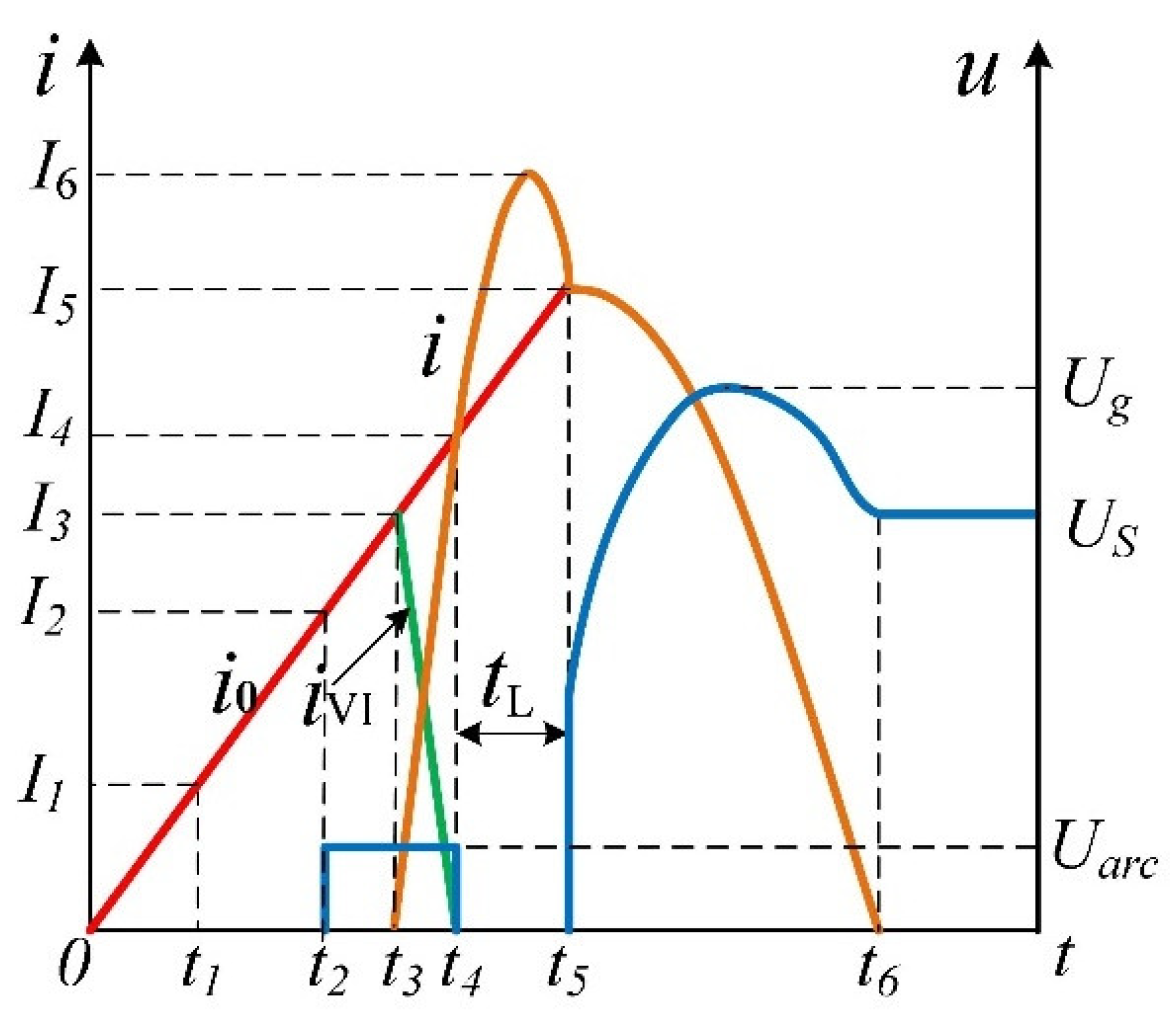
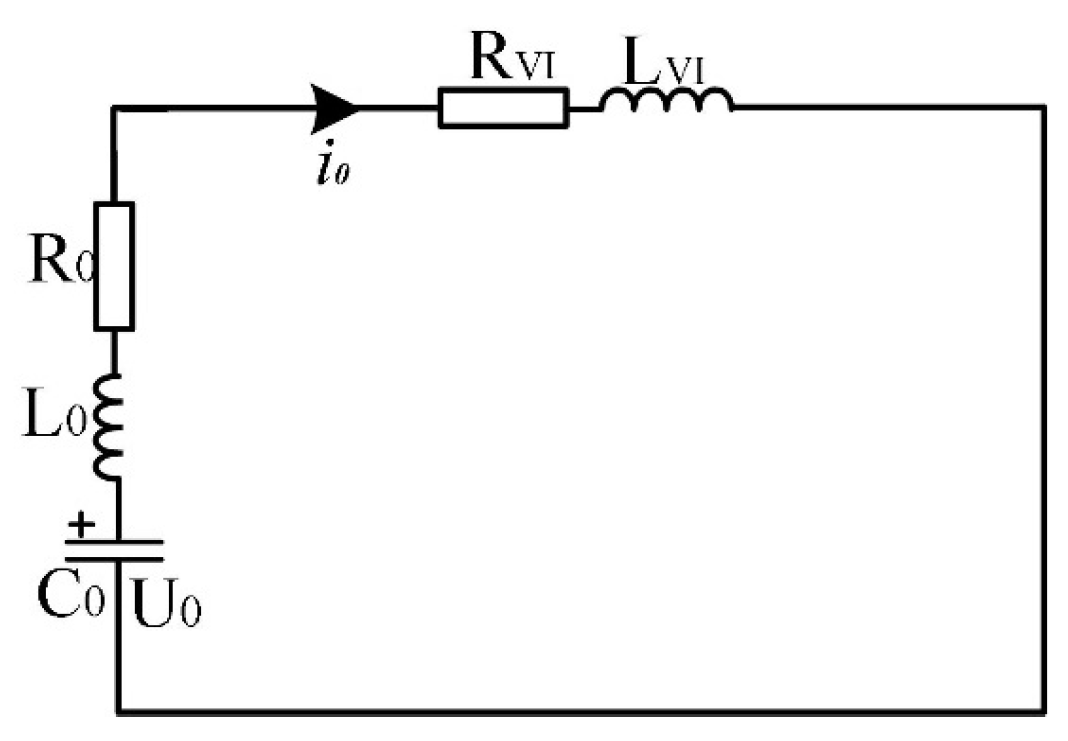


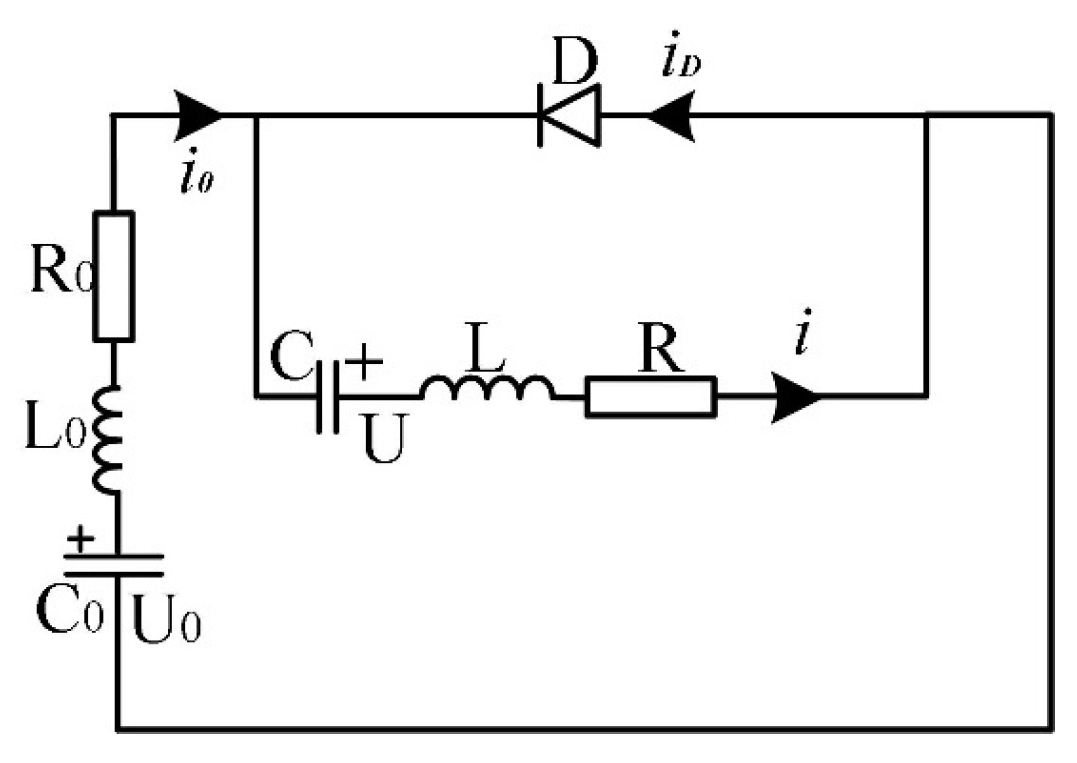
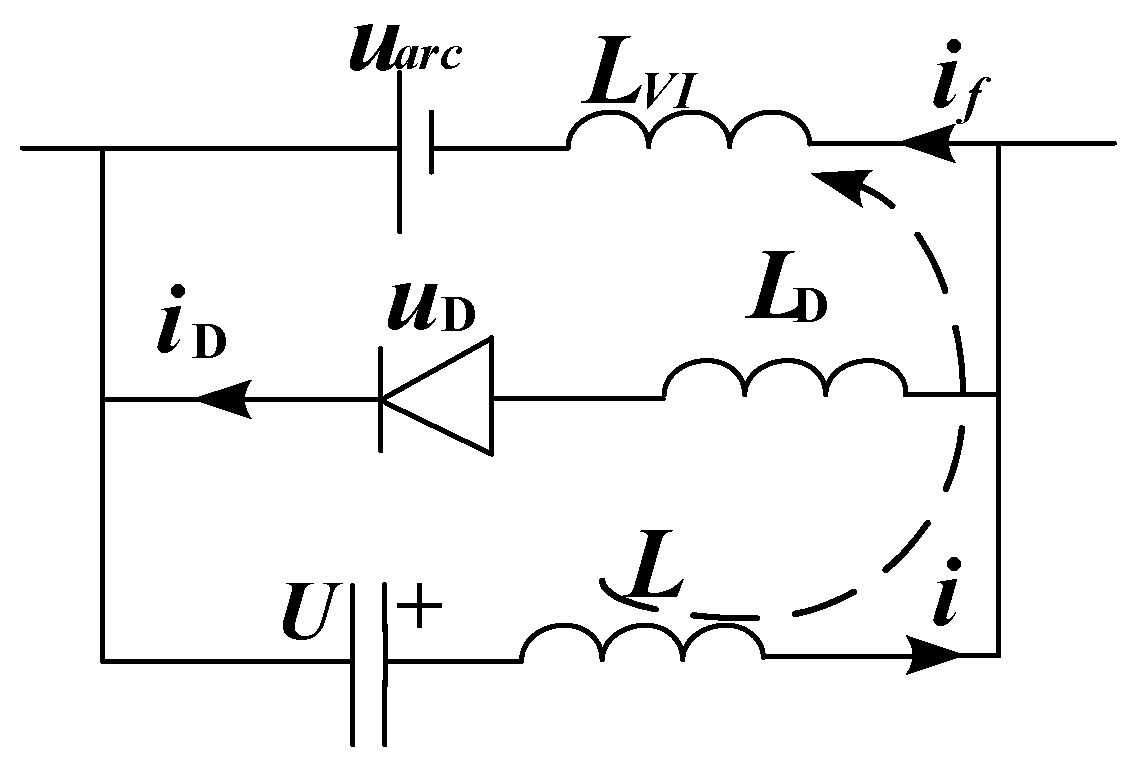
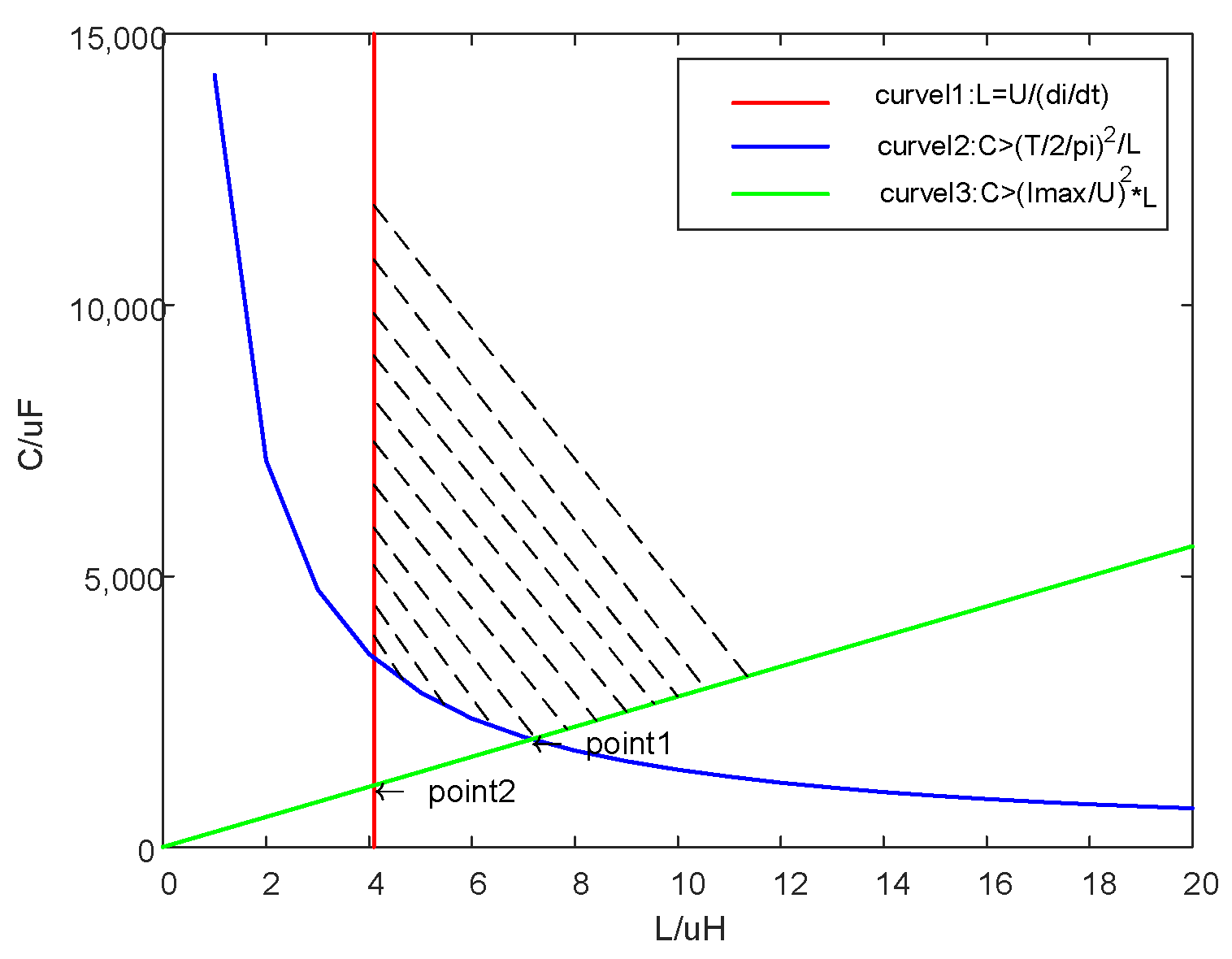
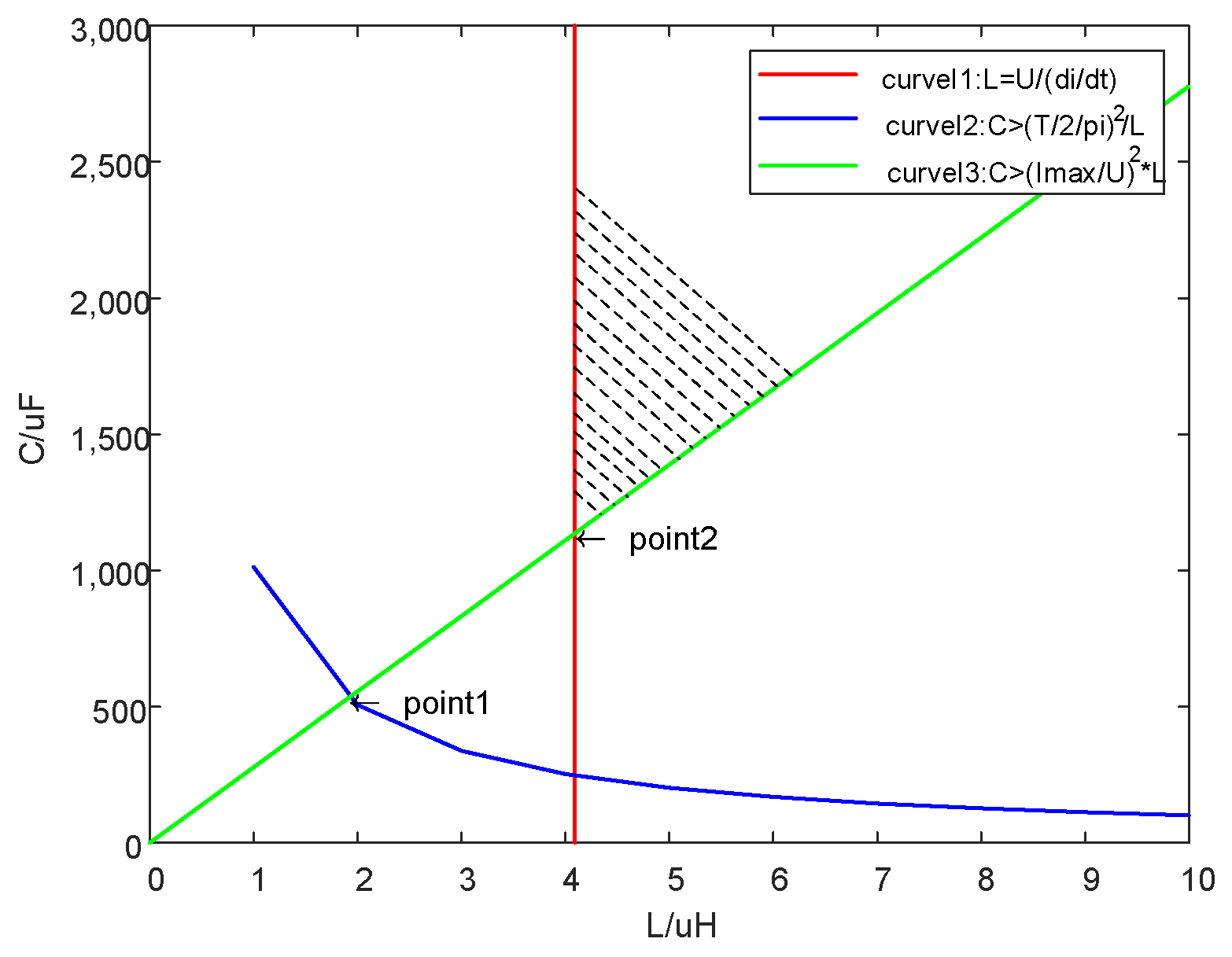
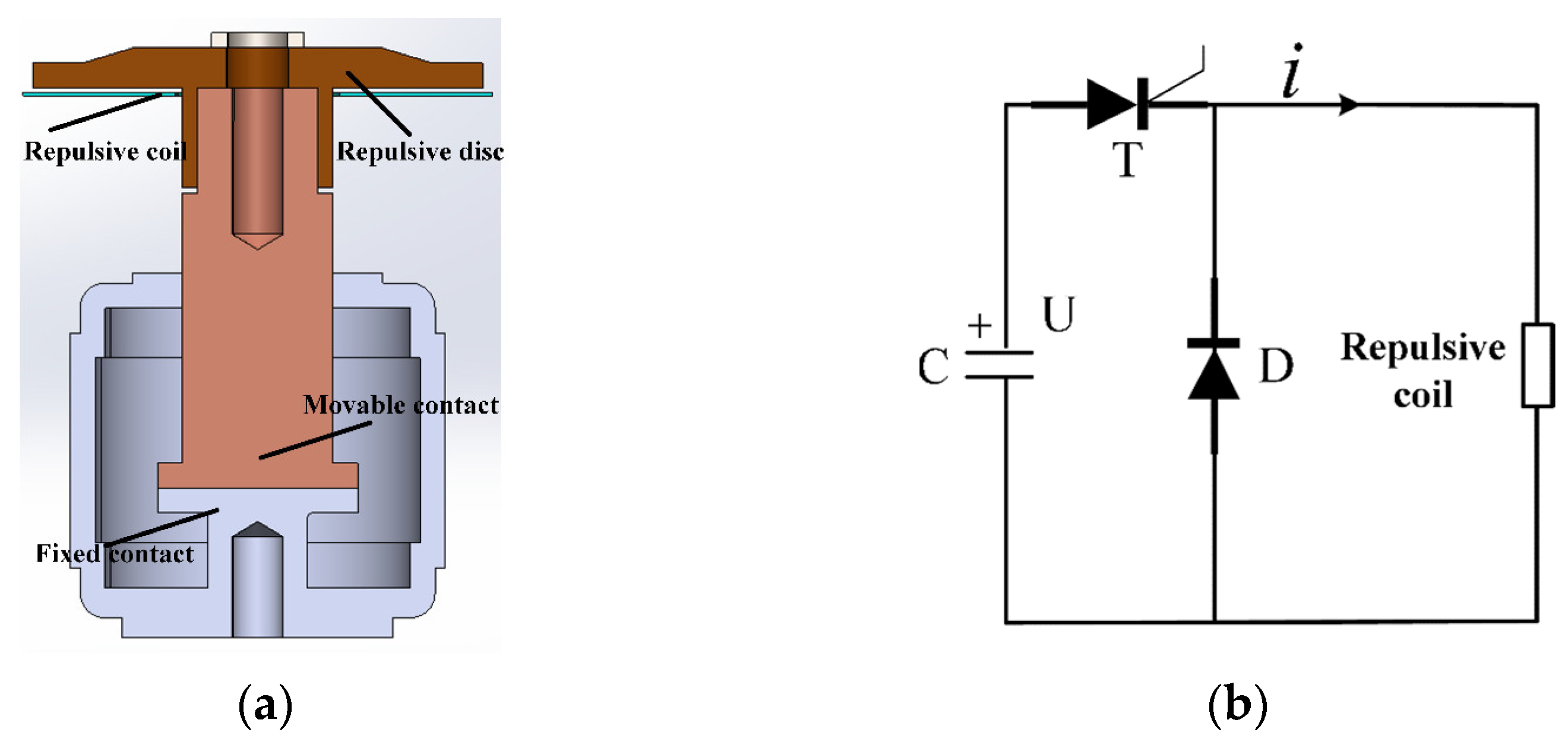
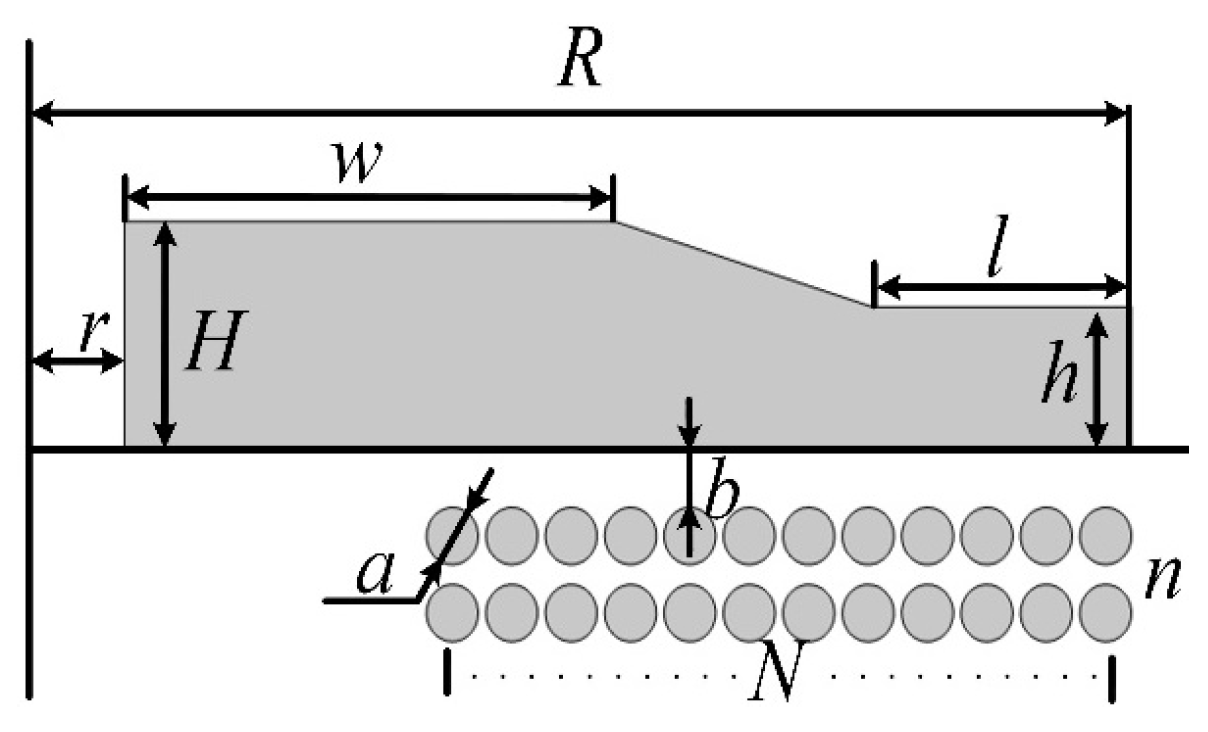
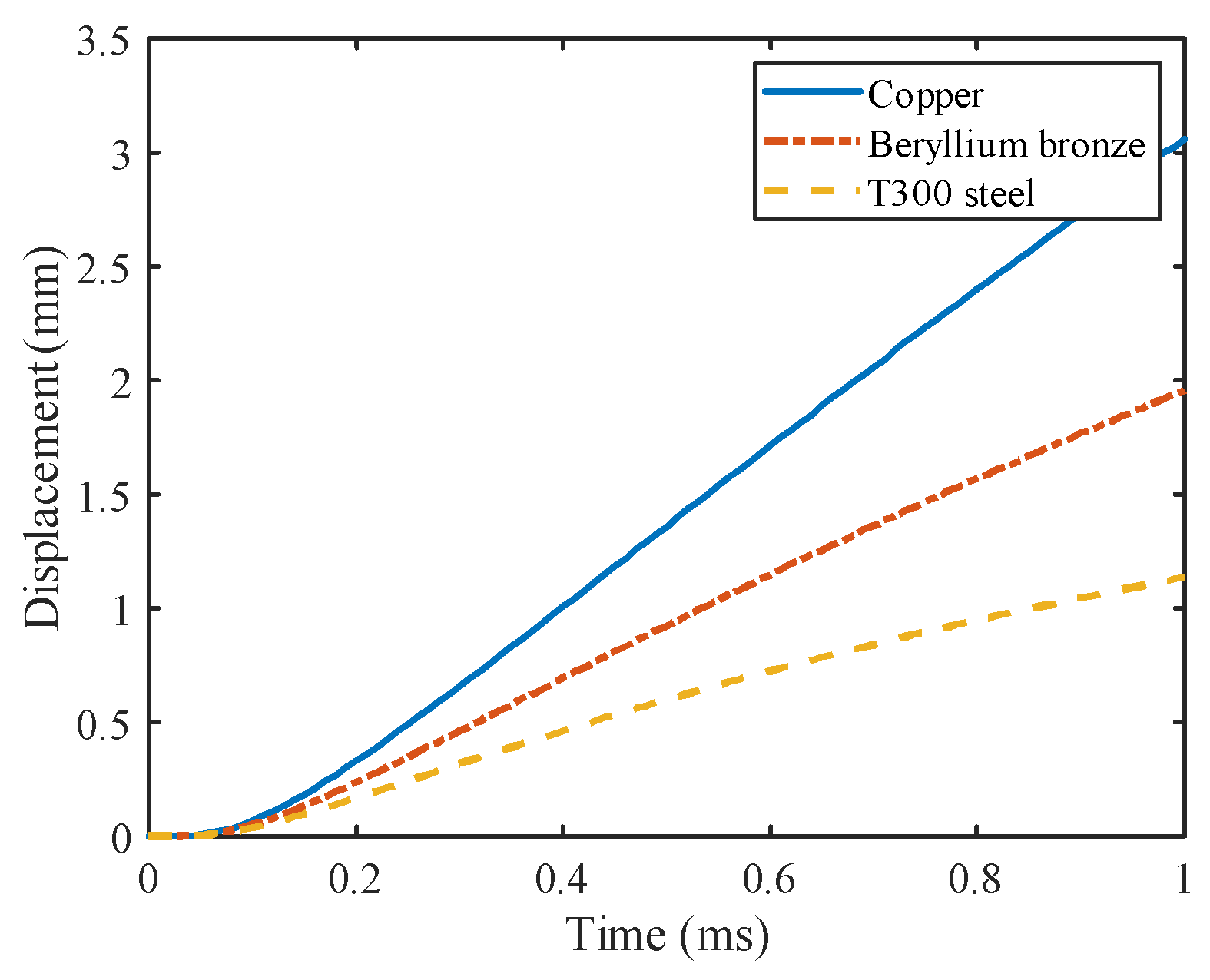
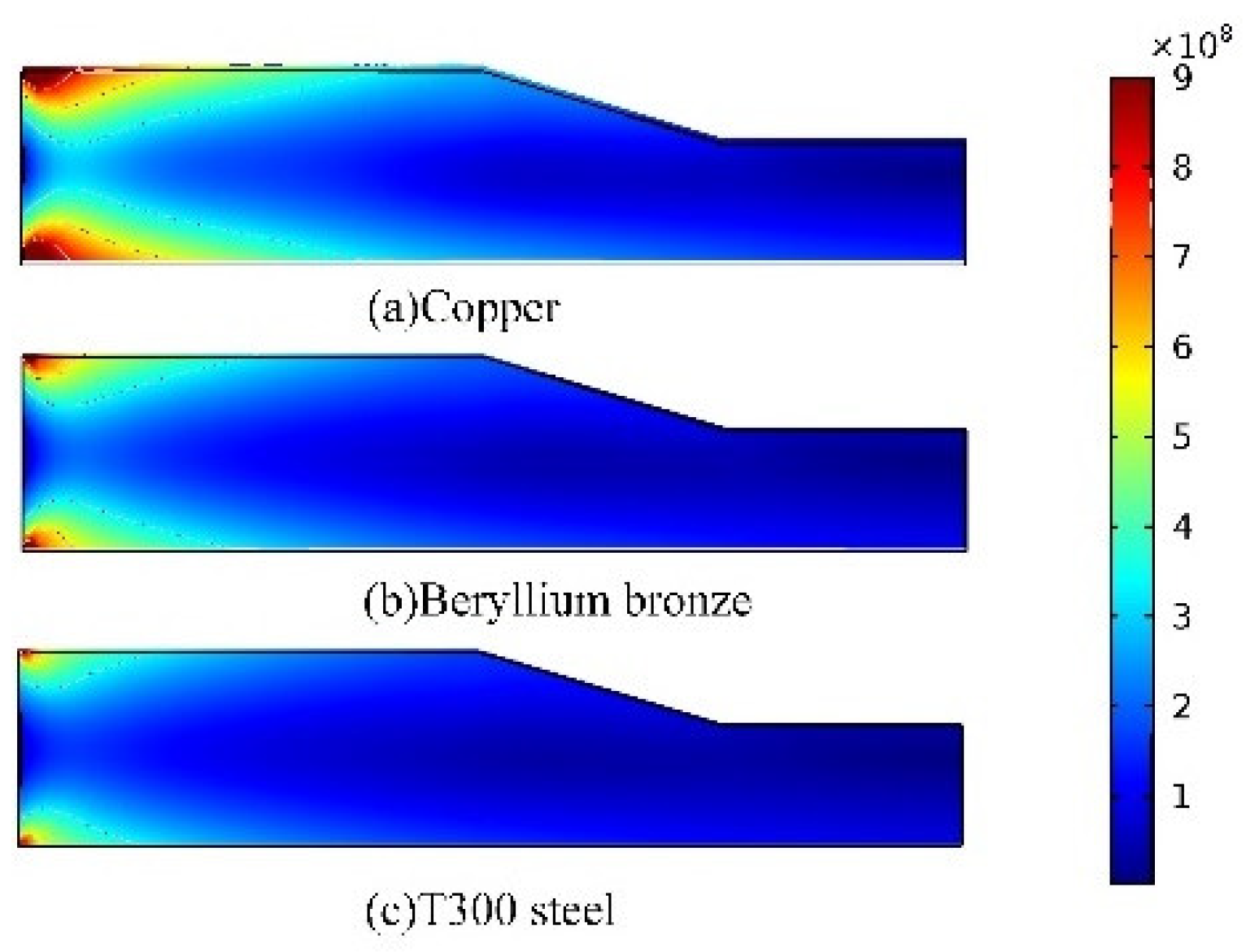
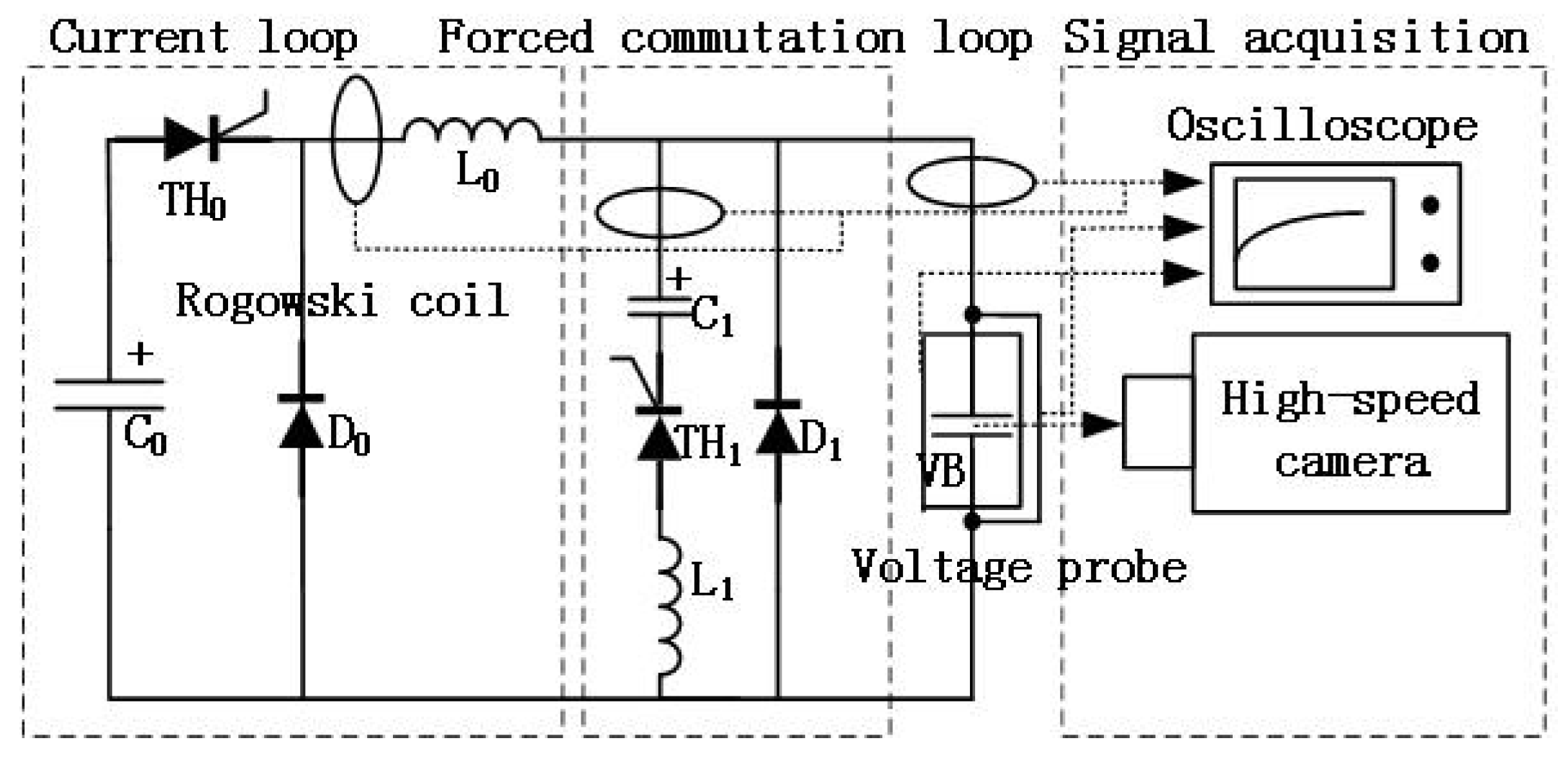

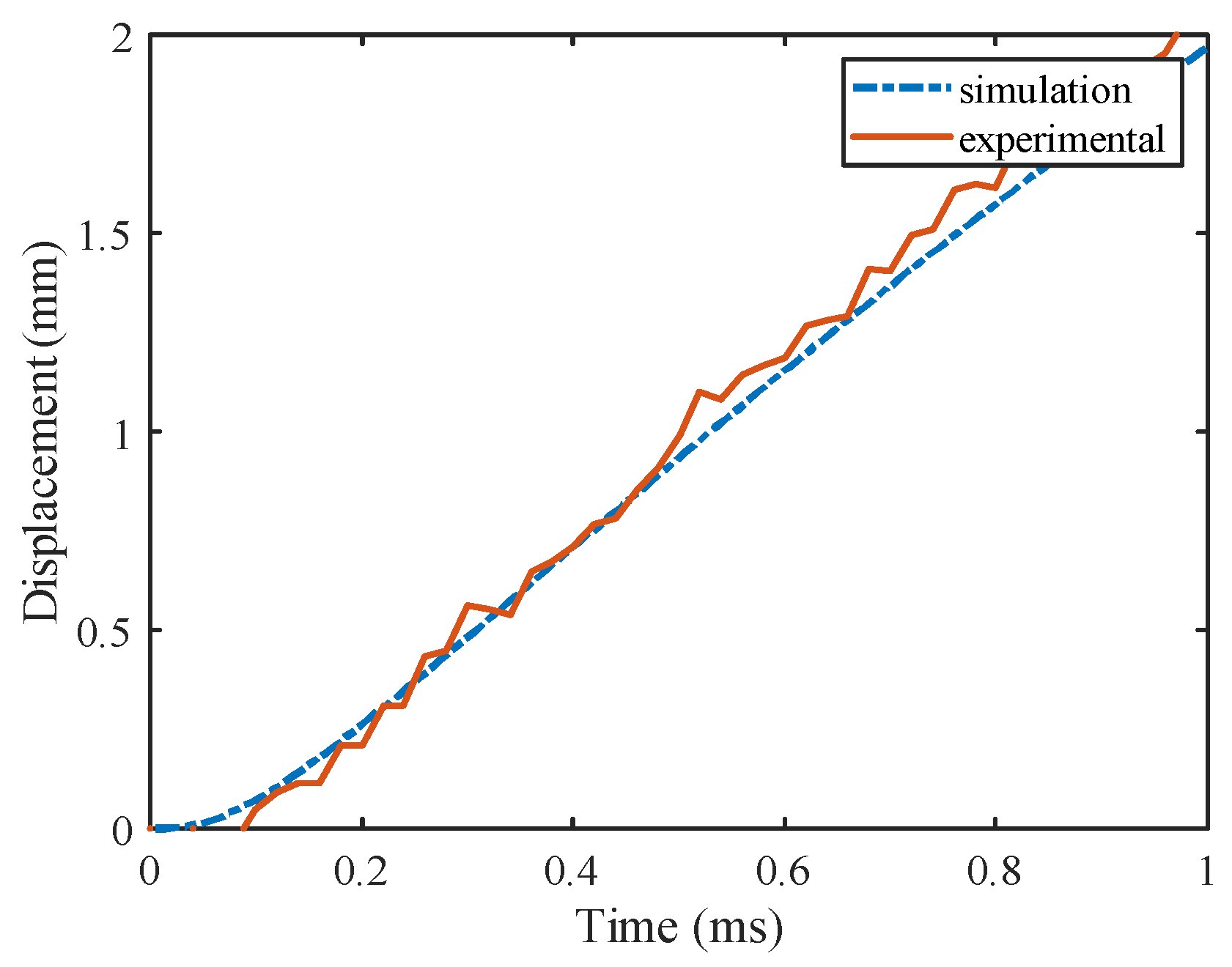
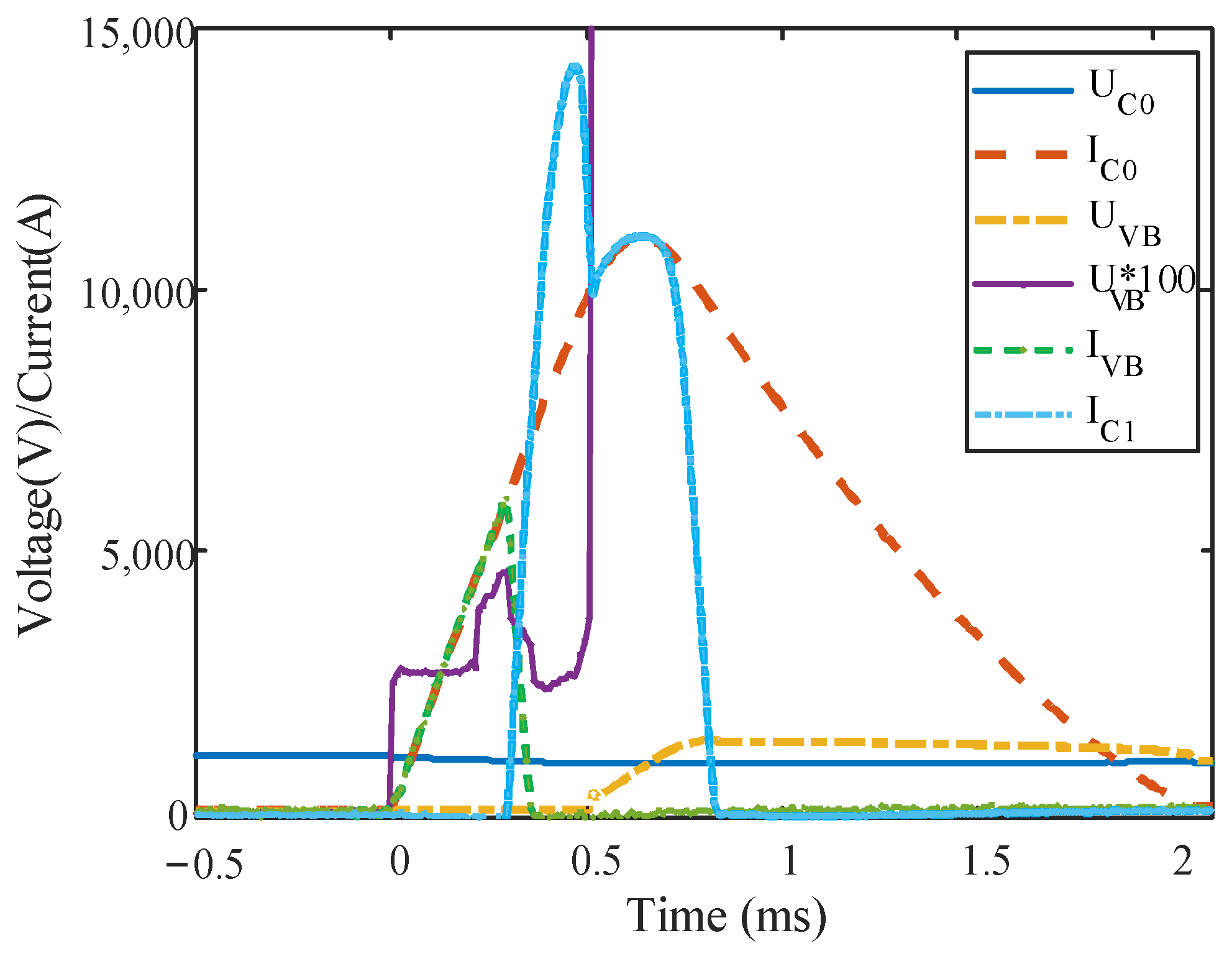
| Parameters | Value | Parameters | Value |
|---|---|---|---|
| Internal diameter r/mm | 6 | Number of coils N | 12 |
| External diameter R/mm | 19 | Number of coil layers n | 2 |
| Inside height H/mm | 10 | Wire diameter a/mm | 2 |
| Outside height h/mm | 3 | Gap b/mm | 2 |
| High bench width w/mm | 10 | Capacitive voltage U/kV | 1.7 |
| Low bench width l/mm | 5 | Capacitance C/μF | 200 |
| Beryllium Bronze | Copper | T300 | |
|---|---|---|---|
| Conductivity /(S/m) | 1.2 × 107 | 5.99 × 107 | 5 × 106 |
| Density /(g/cm3) | 8.3 | 8.9 | 8.0 |
| Yield strength /MPa | 1035 | 70 | 1957 |
| Young’s modulus E/GPa | 130 | 110 | 186 |
| Poisson’s ratio | 0.35 | 0.34 | 0.3 |
| Time | Events |
|---|---|
| 0 μs | Short-circuit fault occurs |
| 100 μs | Fault detection time 100 μs |
| 220 μs | Inherent time of ERM 120 μs |
| 290 μs | Arcing time 70 μs |
| 350 μs | Commutation time 60 μs |
| 500 μs | Zero-voltage time 150 μs |
| 2100 μs | Breaking time 2.1 ms |
Disclaimer/Publisher’s Note: The statements, opinions and data contained in all publications are solely those of the individual author(s) and contributor(s) and not of MDPI and/or the editor(s). MDPI and/or the editor(s) disclaim responsibility for any injury to people or property resulting from any ideas, methods, instructions or products referred to in the content. |
© 2023 by the authors. Licensee MDPI, Basel, Switzerland. This article is an open access article distributed under the terms and conditions of the Creative Commons Attribution (CC BY) license (https://creativecommons.org/licenses/by/4.0/).
Share and Cite
Lv, Z.; Wang, X.; Zhuang, J.; Liu, L.; Yuan, Z.; Li, S.; Wu, J. Analysis and Design of the High Current Rising Rate Hybrid DC Current Limiting Circuit Breaker. Electronics 2023, 12, 2657. https://doi.org/10.3390/electronics12122657
Lv Z, Wang X, Zhuang J, Liu L, Yuan Z, Li S, Wu J. Analysis and Design of the High Current Rising Rate Hybrid DC Current Limiting Circuit Breaker. Electronics. 2023; 12(12):2657. https://doi.org/10.3390/electronics12122657
Chicago/Turabian StyleLv, Zhiyong, Xiangjun Wang, Jinwu Zhuang, Luhui Liu, Zhifang Yuan, Siguang Li, and Jin Wu. 2023. "Analysis and Design of the High Current Rising Rate Hybrid DC Current Limiting Circuit Breaker" Electronics 12, no. 12: 2657. https://doi.org/10.3390/electronics12122657




